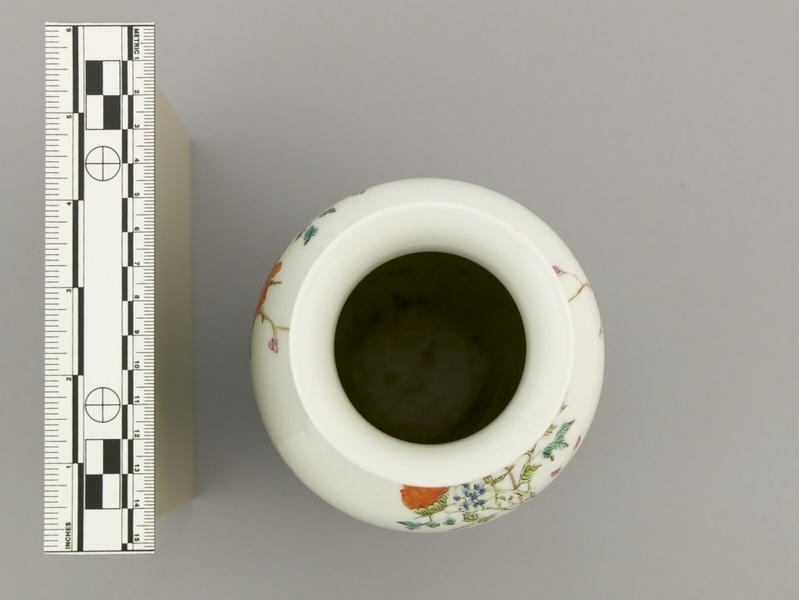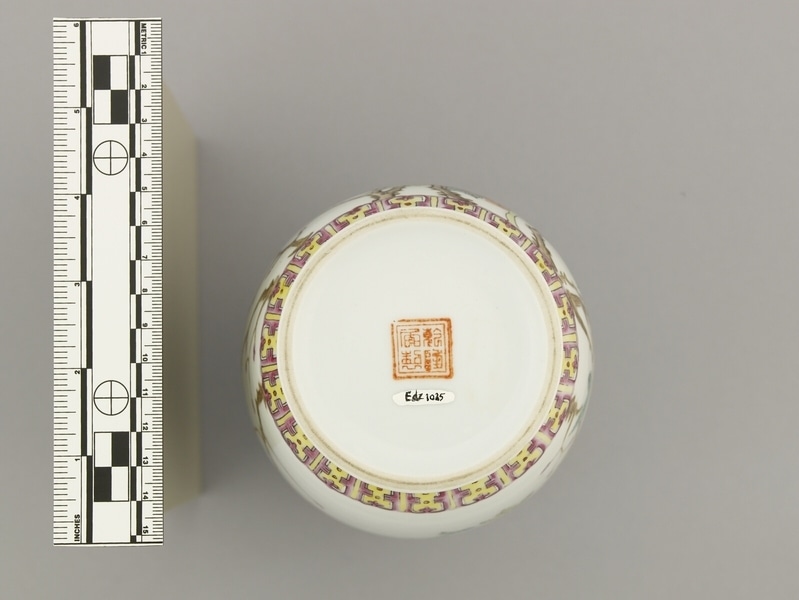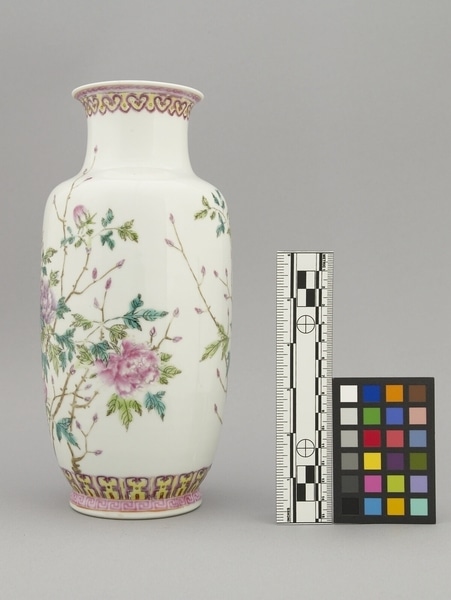Vase Item Number: Edz1025 from the MOA: University of British Columbia





Description
Famille rose style porcelain vase. Against a white background are painted peonies in blue-purple, red-purple, orange-red and yellow; leaves are in light or dark green. The lip and the bottom part of the vase are adorned by heart-shaped and geometric patterns. Its underside bears a four character Ch'ien-lung seal.
History Of Use
This work belongs to the group of Chinese porcelains known as "famille rose", and known in China as fencai (粉彩) or ruancai (軟彩 / 软彩), literally meaning “soft colours” or “pale colours,” and later called yangcai (洋彩) or “foreign colours.” This type of ware was first introduced in the late Kangxi period (1662–1722), possibly around 1720, and were originally painted mostly in rose/pink colours. Many of these colourfully enameled wares were made for export, and their production continued into the twentieth century.
Marks found on the base of Chinese porcelain commonly display the dynasty and the reign. However, it is said when it comes to Chinese reign marks, most of them are not from the period they say, as is the case with this vase. The reign marks from earlier dynasties were often added to later wares, not necessarily as fakes or reproductions, but out of respect for these earlier periods. Most marks comprise four or six Chinese characters written vertically. The mark on this vase reads 乾隆年製 (Qianlong Nian Zhi) and refers to “made during the Qianlong reign of the Qing Dynasty” (1735-1796). The Chinese characters on the mark are done in seal script; thus, the mark looks more like an engraving rather than hand writing. The first two characters on the right, 乾隆 refer to the name of the Emperor/reign, and the two on the left, 年製, “made for/during.” This reign mark is still used on porcelain today, usually as a part of the decoration. In particular, its use was commonly adopted in Hong Kong in the 1960s and 1970s. Omitting the two characters, 大清 (“Great Qing” Dynasty) is a common feature of marks that are not from the actual period.
Cultural Context
used for flower container or as household decoration
Narrative
Said to have been collected by missionaries George and Jane Piercy during their time in China, c. 1853-1882.
Item History
- Made in China between 1700 and 1880
- Collected between 1853 and 1882
- Owned by George Piercy Sr.
- Owned by Richard C. Piercy and Doree Piercy before February 23, 1978
- Received from Doree Piercy (Donor) and Richard C. Piercy (Donor) on February 23, 1978
What
Who
- Culture
- Chinese
- Previous Owner
- George Piercy Sr., Richard C. Piercy and Doree Piercy
- Received from
- Doree Piercy (Donor) and Richard C. Piercy (Donor)
Where
- Holding Institution
- MOA: University of British Columbia
- Made in
- China
When
- Creation Date
- between 1700 and 1880
- Collection Date
- between 1853 and 1882
- Ownership Date
- before February 23, 1978
- Acquisition Date
- on February 23, 1978
Other
- Item Classes
- ceramics
- Condition
- good
- Accession Number
- 0441/0003